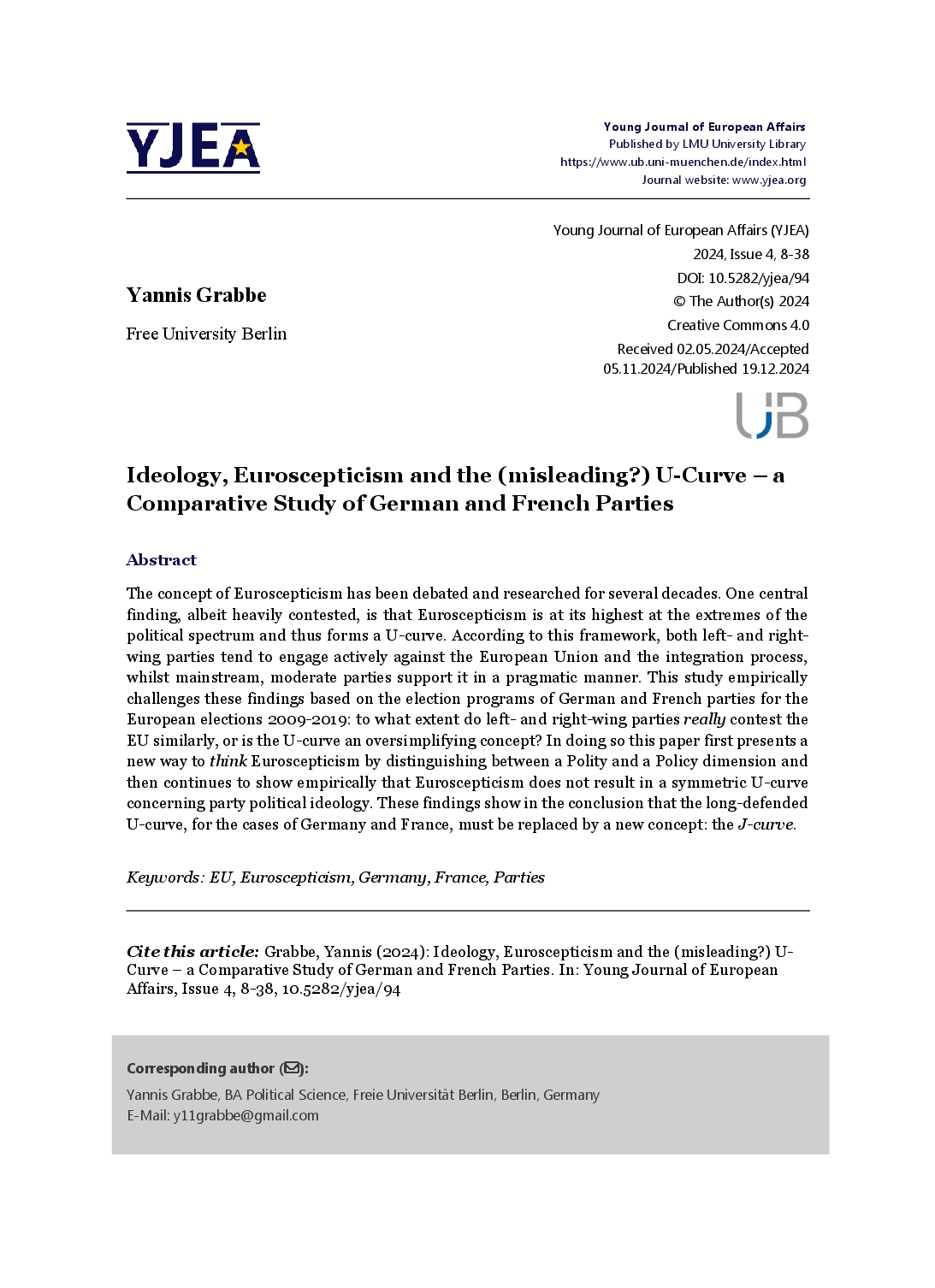Ideology, Euroscepticism and the (misleading?) U-Curve – a Comparative Study of German and French Parties
DOI:
https://doi.org/10.5282/yjea/94Schlagwörter:
EU, Euroscepticism, Germany, France, PartiesAbstract
The concept of Euroscepticism has been debated and researched for several decades. One central finding, albeit heavily contested, is that Euroscepticism is at its highest at the extremes of the political spectrum and thus forms a U-curve. According to this framework, both left- and right-wing parties tend to engage actively against the European Union and the integration process, whilst mainstream, moderate parties support it in a pragmatic manner. This study empirically challenges these findings based on the election programs of German and French parties for the European elections 2009-2019: to what extent do left- and right-wing parties really contest the EU similarly, or is the U-curve an oversimplifying concept? In doing so this paper first presents a new way to think Euroscepticism by distinguishing between a Polity and a Policy dimension and then continues to show empirically that Euroscepticism does not result in a symmetric U-curve concerning party political ideology. These findings show in the conclusion that the long-defended U-curve, for the cases of Germany and France, must be replaced by a new concept: the J-curve.

Downloads
Veröffentlicht
Ausgabe
Rubrik
Kategorien
Lizenz
Copyright (c) 2024 Yannis Grabbe

Dieses Werk steht unter der Lizenz Creative Commons Namensnennung 4.0 International.


